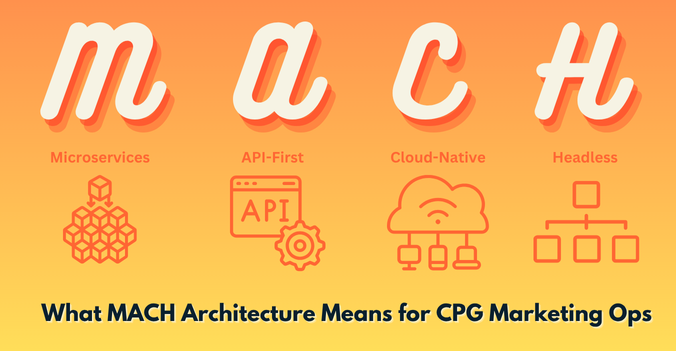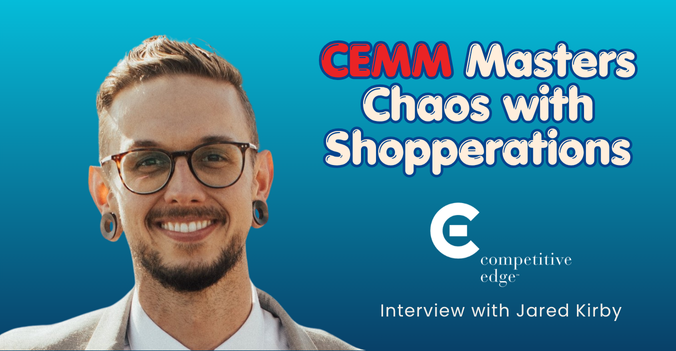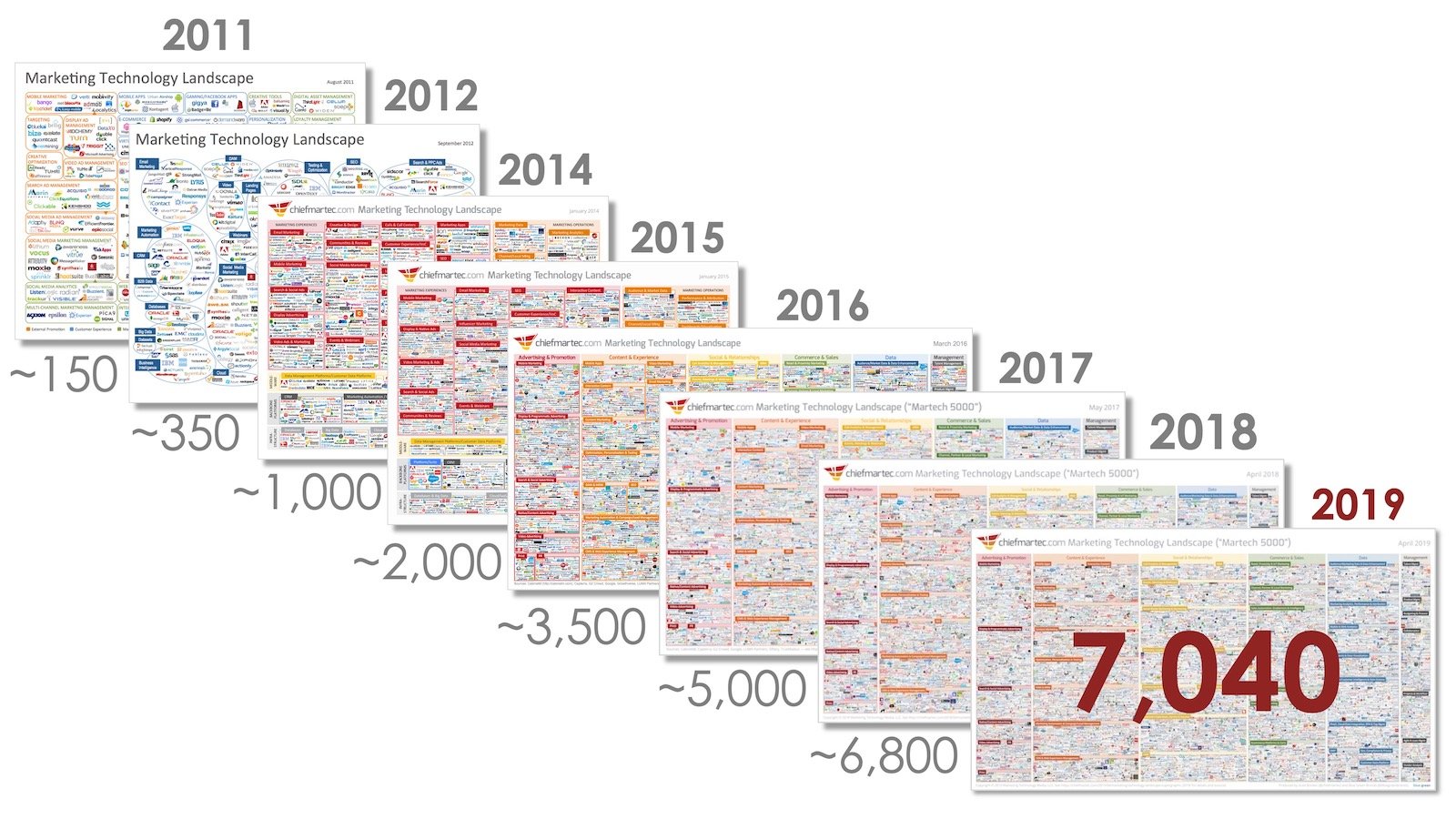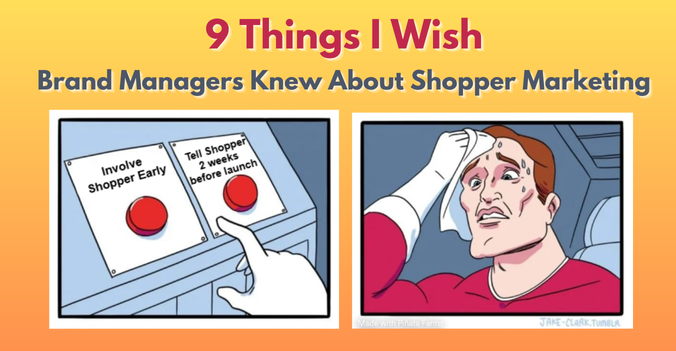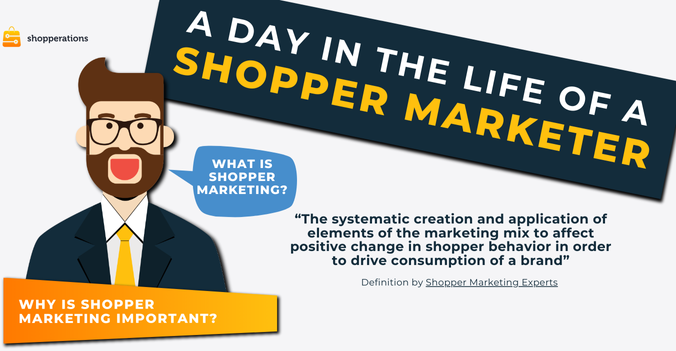When I worked in the CPG space, I thought I knew something about MarTech. MarTech startups popped up right and left, some of them pitched business to us, others made news because they were acquired by our retail customers or our media partners. But not until I started a MarTech company of my own did I realize and appreciate the amazing speed with which marketing technology landscape has been exploding lately.
Scott Brinker, founder of ChiefMarTech and the organizer of the MarTech Conference, has been documenting and visualizing this space for the last 8 years. As of 2019, more than seven thousand (!) MarTech companies have been formally recorded by Scott and his team.
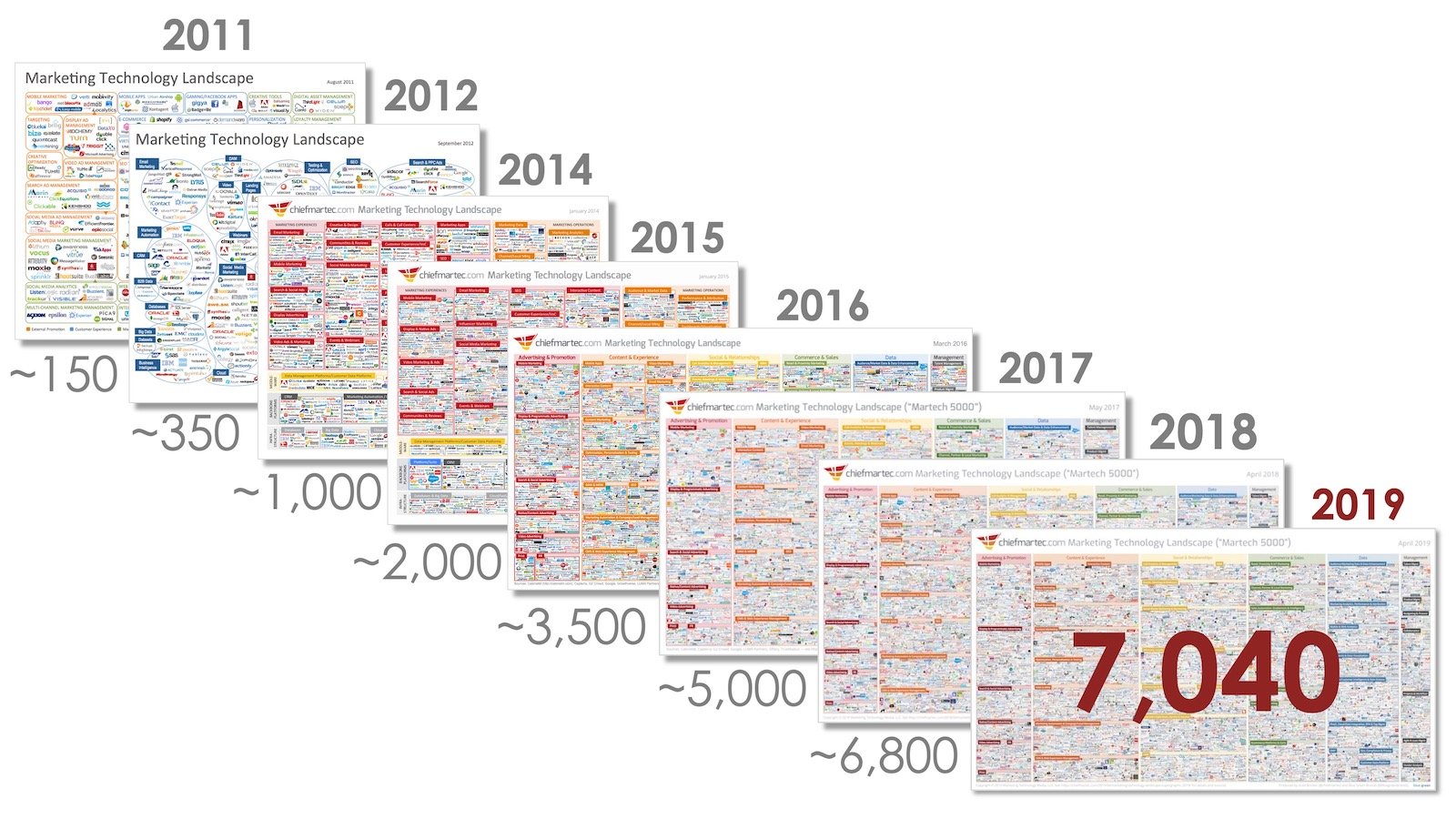
You can find these charts and many other amazing MarTech insights on Scott’s blog.
I attended the MarTech West conference in San Jose earlier this month for the first time and completely geeked out. Here, I wanted to share several key insights that are either eye-opening or particularly relevant for my CPG clients and peers.
1. The Second Golden Age Of MarTech Is Upon Us
While it seems like the quantitative growth has levelled off in 2019, Scott Brinker argues that we are on the verge of a qualitative shift in MarTech, or what he calls its “Second Golden Age”. The three dimensions that he assesses, Ecosystems, Experts & Engineers, are becoming less binary and more fluid.
The dichotomy of #martech is dissolving, and the second golden age is upon us. @chiefmartec @martechconf pic.twitter.com/ywrDxneEtL
— Olga Yurovski (@Shopperations) April 4, 2019
For instance, he predicts that the next generation of MarTech will no longer try to neatly identify themselves as Software vs. Services, the two sides are blending and merging to serve clients better.
Deciding whether to buy the “whole suite” of software solutions from major players vs. working with “point solutions” specialists serving specific domains or automating specific tasks will no longer be required. With major platforms like Salesforce, Microsoft, Oracle, Adobe and Shopify that are creating open ecosystems, clients can rely on core functionality from these major players but also partner with the best-of-breed app vendors who build their solutions to complement these platforms.
Build vs. Buy will also become less of a struggle when even non-programmers, business users like marketers, will be able to develop custom applications based on a common core. All of this will be possible thanks to low-code/no-code movement that is gaining traction.
2. CPG Industry Is Missing Out
This feast of MarTech that I experienced in San Jose was thrilling and foreign for me at the same time. Marketers from our $2 trillion industry were vastly under-represented in this venue. I can count on the digits of one hand the number of CPG folks that I met at the conference. The only speaker from our industry was Sue Haddrill, Nestle Purina’s VP of Marketing Technology who shared a case study on how they partnered with Lytics to leverage customer data from their PetFinder platform.
The reason I expected more CPG representation was because the recent CMO survey by Gartner concludes that almost ⅓ of CMOs budgets are invested in MarTech. This is not industry-specific, however, and given the low attendance of CPG folks at this conference, it’s safe to assume that the CPG CMO tech budget is vastly smaller.
According to Gartner, nearly 1/3 of all CMOs budgets allocated to marketing technology What % is it for the #CPG industry? https://t.co/sLjM0y83la pic.twitter.com/ZNZwaqIfzT
— Olga Yurovski (@Shopperations) April 17, 2019
There may be various reasons why CPG CMOs and marketing teams are slow to embrace MarTech. Our industry faces major roadblocks on its way to marketing automation, not the least of which is the dire need to innovate on the business model and conquer new channels. This leads to my next point...
3. Why CPG INCUMBENTS Can’t Compete With DTC
According to IAB’s DTC Report, costs of starting a new online business have plummeted over the recent decade and barriers to entry have practically disappeared. As a result, Direct to Consumer companies like Harry’s, Brandless, Glossier, and countless other small “e-commerce first” CPG brands are steadily eroding the large incumbents’ market share.
One of the best keynote presentations at MarTech conference was delivered by Terence Kawaja. Terence is the CEO of Luma Partners, an investment bank that specializes in investing in DTC brands. He makes a case for firing traditional CMOs because they are ill-equipped to deal with the emergence of DTC brands. This particular slide sums it all up for me:
Why traditional #CPG brands can’t win the battle with DTC @LUMA_partners #MarTechConf pic.twitter.com/dPrVJHZ5Uv
— Olga Yurovski (@Shopperations) April 5, 2019
The insurmountable barriers in the form of middlemen like Retailers and Agencies and difficulties fostering meaningful 1:1 customer relationships are the two primary reasons why CPG incumbents find themselves in a tough spot. Business model innovation is the main mandate for today's CMO, and, most likely, the old guard has to change to unleash this new type of innovation.
Most CMOs have golden parachutes, so I wouldn’t worry about them too much. But rank-and-file marketers are in a more vulnerable position. Are you ready for the new CPG challenges? Buckle up for a wild ride ahead!
4. MarTech Is A Tool To “Empower the Edge”
My most favorite speech at the MarTech conference was delivered by Kathleen Schaub, Vice President, CMO Advisory Services at IDC. I literally transcribed her entire speech because she was able to very eloquently and compellingly describe the role of technology in today’s crazy world of marketing.
Her story goes like this: marketing today is volatile - situation changes all the time, highly uncertain, and complex because it involves many players making independent decisions that affect outcomes. Think about your consumers, shoppers, retail customers, agencies, clients, competitors, regulatory government bodies... It’s a battleground of sorts.
What can modern marketers learn from the SWAT teams on the front lines, surgeons and nurses in operating rooms, and pilots and air traffic controllers?
Turns out, successes of these kinds of teams are highly correlated with the degree of guided decentralization. It manifests itself as field empowerment (absence of elaborate approvals for every decision), abundance of information to make quick judgement calls, and presence of appropriate equipment and tools for the frontline workers. Marketing technology, Kathleen argues, serves as an enabler of such guided decentralization because it “empowers the edge” without losing oversight and accountability.
Things that make guided decentralization work are:
- Pushing decision making as far to the edge as possible
- Creating a shared mission
- Embracing radical transparency
- Enabling agile action with iterative efforts and frequent feedback loops; and
- Orchestrated collaboration that involves many subject matter experts who can provide unique POVs and assess situations from various angles.
Have you thought of your marketing team as frontline soldiers at war? Perhaps you should.
5. Marketing Budget Is The Ultimate Expression Of Strategy
Marcia Trask, Director of Marketing Operations from a software company NewRelic shared her journey as a newly hired marketing operations lead. When she came to the company, her marketing team couldn't answer even basic questions CMO was asking. Marcia used marketing software Allocadia to bring order to her team’s budgeting process and better understand their spending habits. Her goal was to instill transparency, accountability and cross-functional alignment around marketing investments.
New Relic’s strategic and finance leads were thrilled that Marcia’s team cleaned up their tactic, program and campaign hierarchies, built proper taxonomy around marketing activities, broke down silos between narrowly focused marketing subject matter experts and helped them see how everything they do supports the company's strategic objectives.
Despite being from a completely different industry, her story was very relatable, and her words “Your marketing budget is the ultimate expression of your strategy” rang true.
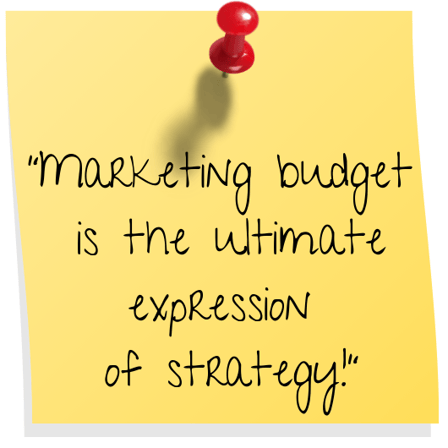 In my CPG marketing automation journey, I met some marketing leaders who thought budget management was too tactical for them to get into. If you dread budget management and think it’s beneath you, think again. Outsourcing this vital function to agencies or pushing this task to junior associates is the primary reason that strategy and executions get misaligned.
In my CPG marketing automation journey, I met some marketing leaders who thought budget management was too tactical for them to get into. If you dread budget management and think it’s beneath you, think again. Outsourcing this vital function to agencies or pushing this task to junior associates is the primary reason that strategy and executions get misaligned.
6. DMPs & CDPs Are Like Parks & Backyards
Every time I met a CPG marketer at MarTech conference, I asked them a question: what technology fascinates you the most? What new capabilities are you interested in learning more about? Most mentioned they wanted to learn more about Consumer Data Platforms, or CDPs. Not to be confused with Data Management Platforms, or DMPs. These two platforms share many things in common, such as massive amounts of consumer data aggregated from multiple sources and helping marketers target their messages better. But they are also vastly different in type of data they have and the kinds of purposes they serve.
DMPs' main role is to enable digital advertising. The consumer data in DMPs lacks any personally identifiable information, rather it is used in aggregate to help segment and target consumers based on demographic or behavioral characteristics.
CPDs, on the other hand, contain customer-specific data that is generated by real company’s clients and could be enriched with the third party data. The goal of a CDP platform is to offer unified customer and prospect records to orchestrate customer journeys and empower frontline employees.
The best analogy for how to think of CDPs and DMPs I heard so far was offered by Tony Burns from Real Story Group. He said that “DMP is like a public park where many people come to contribute and can enjoy its benefits. CDP, on the other hand, is like your company’s private backyard accessible to employees and associates only”.
7. Automation = Humanization
Adobe’s EVP & CMO Ann Lewnes was a fireside chat guest at the conference. The highlight of her speech was her proclamation that “automation drives humanization”. Ann argues that
- Creativity in marketing will not be automated for a long time
- MarTech automates jobs that nobody wants to do anyway, and
- Automation frees up time for people to be more engaged with customers and do more meaningful work.
Thanks @alewnes for sharing your insights today at #MarTechConf. #sketchnotes pic.twitter.com/yV99qHrbF3
— Katie Kelly (@KKellyMSU) April 4, 2019
Another great point she made was that marketing automation serves more than just marketing teams. MarTech benefits cascade out to adjacent functions, be it Finance, Customer Service or Sales. New Relic’s case study in Point 5 above clearly supports this claim.
Ann's presentation was particularly poignant because it validated all the reasons why I started Shopperations almost five years ago. My mission has always been to help CPG industry harness marketing operations and automate minutiae, so that marketers can do marketing. If you are ready to begin your MarTech journey, let's connect.
*****
I wish you could experience MarTech conference in person. The next event is MarTech East in Boston in September. Leave a comment below if you found this blog helpful and if you are planning to attend future MarTech events.

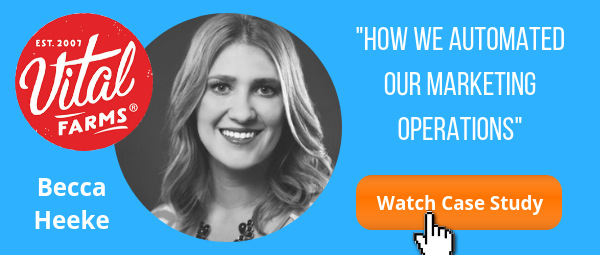

.png)
